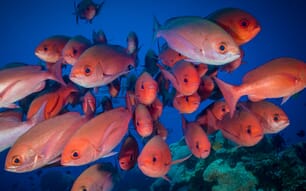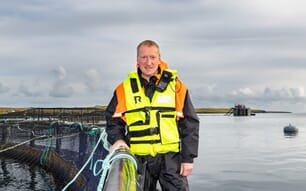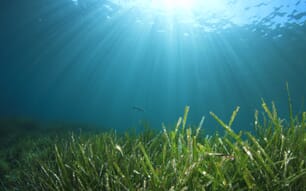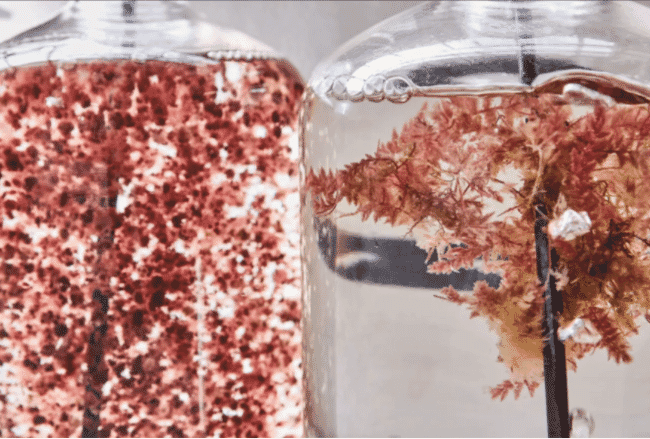
© The Australian Seaweed Institute
Thousands of kilometers of undisturbed coastlines, a longstanding culture of aquatic farming, steadily increasing demand for sustainable, plant based products and significant potential for environmental regeneration make Australia primed and well-positioned to host a robust seaweed industry - one which experts estimate could be valued at $100 million by 2025.
As part of the launch of Transformations for a Sustainable Ocean Economy in December 2020, Australia’s Prime Minister Scott Morrison flagged the acceleration of seaweed aquaculture as a priority for the country’s short term economic plan and for the achievement of ambitions set out by its membership in the Ocean Panel, an intergovernmental ocean policy body made up of 14 heads of state, that seeks to build momentum for sustainable ocean industries.
The startup ecosystem in Australia’s young seaweed industry has become noticeably more vibrant in the last 12 months, with new startups at various stages of development coming to life. Several key players are emerging as leaders along the value chain - from research to cultivation, manufacturing to distribution.
Research
While proportionally, seaweed research in Australia has been slow to pivot towards commercialisation, a commercially-focused research sector is starting to take shape. The Australian Seaweed Industry Blueprint released in September last year, authored by the Australian Seaweed Institute and commissioned by AgriFutures, identified the Marine Bioproducts Cooperative Research Centre (MB-CRC) as a critical proposal for closing this gap and securing the research and development funding needed to support the industry.

The MBCRC would provide guidance and insight over the coming decade for stakeholders and investors regarding existing and emerging possibilities for the country’s seaweed market. Led by Flinders University in Adelaide, the MB-CRC would be the first industry-led national research and development platform with a specific view to scale-up and streamline innovations to improve both the supply and value chain, and aim to propel Australia’s seaweed bioproducts into the global competitive marketplace. Statements released by the cooperative emphasize a major incentive for the proposal for concentrated research and development in the commercial seaweed sector is the limitations of traditional agriculture for meeting the demands of an exponentially growing population.
The Seaweed Solutions for Sustainable Aquaculture CRC also aims to guide the industry towards sustainable integrated multi-trophic aquaculture (IMTA), which involves collaboration across various types of aquaculture producers for the purpose of enhancing the economic efficiency and environmental and social sustainability of the sector as a whole. The core mission of the project is social and environmental benefit sharing to be achieved through the identification of the most well-suited species for specific localities, growing techniques, product possibilities and management structures for seaweed aquaculture and IMTA in South Australia and Tasmania. It also calls for a cohesive Australian National Seaweed Industry Blueprint to safeguard stakeholders’ interests at all levels.
Commercial cultivation
One of the most prevailing and immediate barriers to the growth of Australia’s commercial seaweed industry is in securing the large ocean leases required for commercial scale seaweed cultivation. While most state government aquaculture regulators have reported significant increases in parties seeking to obtain aquaculture licences for ocean seaweed farms, the regulatory challenges have to date held off the establishment of any purely seaweed-oriented commercial farms in Australia’s oceans.
Despite these challenges, CH4 Global, a US-based company with offices in Australia and New Zealand, is setting an example for the social and economic benefit sharing sustainable seaweed cultivation can offer through their partnership with Narungga Nation Aboriginal Corporation in South Australia.
The seaweeds will be grown in spaces consisting of 20 hectares of water and two hectares of land, with young algae being transferred from land-based hatcheries to the water to mature. These traditional waters, which are the native home of the Asparagopsis species, provide the ideal climate for cultivating both the cold and warm water varieties of the algae, and the company aims to become the world’s first commercial scale supplier of Asparagopsis.
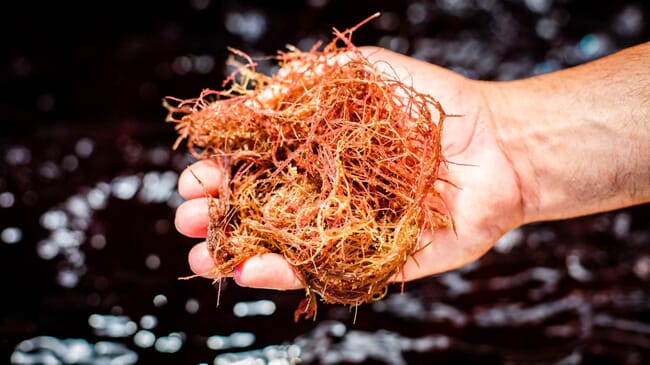
A handful of Asparagopsis taxiformis © CH4 Global
Last year CH4 Global reached an agreement on terms for licenses from FutureFeed - another Australia-based company which launched late last year and holds the intellectual property rights to the agrifeed supplement - for the sale and distribution of Asparagopsis in Australia and New Zealand. FutureFeed CEO Andrew Gatenby has shared that FutureFeed believes CH4 Global “will be a key enabler to ignite the growth of a new industry leveraging our key intellectual property to ultimately mitigate climate change”.
The startup has already secured a buyer for its first output, which they say would feed 10,000 cows and create a guaranteed $7.8 million profit. Asked about their current operations, CH4 Global general manager in South Australia, Adam Main, told The Fish Site: “We have been granted over 800 hectares of water space in addition to the hectares we will access through our partnerships with Narungga Nation and with existing finfish and shellfish aquaculture operations”.
Elaborating on the partnership, which is the first between an Indigenous organisation and a commercial seaweed startup at this scale, Main said: “It was instantly apparent that there was a shared desire to disrupt the current way of thinking in regard to Aboriginal involvement in fisheries and aquaculture, and build something that would return significant benefit to the Narungga coastal community…[CH4 Global’s] hope is that the partnership with Narungga Nation will act as an example and catalyst to encourage other Aboriginal coastal communities to get involved and share in the benefits of this opportunity”.
It was also emphasised that as one of CH4 Global’s core company tenets, this partnership fits in with a wider goal to strive for regenerative economic, social and environmental benefit sharing that aims to catalyse further partnerships with Indigenous and First Nations communities wherever possible.
Another startup making large strides in commercial seaweed cultivation is Tasmania-based Sea Forest, which has just received a $1 million Accelerating Commercialisation grant from the federal government. The company is planning on using the grant to scale up production of Asparagopsis seaweed, which it is currently cultivating on repurposed mussel farms in Mercury Passage. Sea Forest sublicenses the Asparagopsis supplement from FutureFeed and has secured a deal with New Zealand dairy company Fonterra to trial feed the supplement for cattle and sheep.
Sea Forest sees its product as directly addressing two of the most pressing crises of our time; climate change and food security. Sea Forest’s CEO Sam Elsom founded one of Australia’s first sustainable fashion companies, and eventually moved into the seaweed sector after learning about its immense potential for fighting climate change through carbon sequestration.
Manufacturing
Asparagopsis is claiming a large portion of recent attention in Australia’s seaweed landscape due to its commanding potential for climate-change mitigation. The Australian Seaweed Blueprint identified this edible species of red algae as the single biggest opportunity for the industry, estimating that 70 percent of industry growth in Australia will come from Asparagopsis cultivation alone. A CSIRO-led study recently found it had the ability to drastically reduce the methane emitted from cattle when a small portion was added to their feed. As well as mitigating the greenhouse gas emissions contributed by Australia’s cattle industry - which account for 10 percent of the country’s total emissions - the seaweed has significant carbon sequestration properties.
FutureFeed, established by CSIRO (Commonwealth Scientific and Industrial Research Organisation) and described as a “sea-based land solution”, is the Australian company that holds the global intellectual property patent for the technology that produces the agrifeed supplement. The company aims to produce the product at scale within two years, and markets its product as a win-win-win for business, the environment and the animals themselves. Other investors in the FutureFeed project include stockfeed and livestock supplement producer GrainCorp, beef supply chain group Harvest Road, national supermarket retailer Woolworths, and AGP Sustainable Real Assets-Sparklabs Cultivate joint venture.
Additionally, current upward trends in demand for plant based and sustainable products in Australia, complemented by a reinvigorated wellness industry, indicate a healthy emerging market for beauty, pharmaceutical, packaging and food products made from a variety of seaweed species.
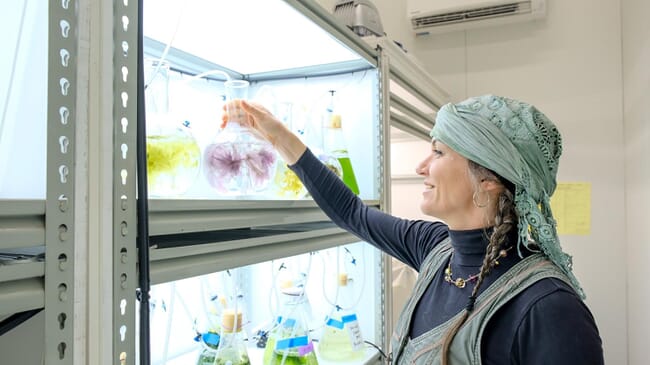
PhycoHealth is a Tasmania-based startup that is producing seaweed infused edible goods – such as corn chips, pasta, salts, dukkah and muesli – through Australia’s first food-grade seaweed farm. In an interview with The Fish Site, seaweed scientist and founder PhycoHealth, Dr Pia Winberg said: “This site can readily process up to 100 tonnes of dried seaweed and 1,000 tonnes of wet seaweed per annum, with a target of producing 1,000 tonnes of finished stable foods containing seaweed per annum… and we’re preparing for the next growth spurt”.
PhycoHealth is also producing seaweed extracts for wound healing and gut health, and plans to expand its operations in anticipation of the industry boom.
“We make concentrated extracts of a gut fibre that is unique to seaweed, and our particular type of seaweed mimics human connective tissue, producing a specific effect in the gut, as well as supporting the production of collagen and elastin,” says Dr Winberg.
Employing a circular model, Phycohealth uses captured CO2 to run their seaweed farm in the Shoalhaven region of New South Wales. The captured carbon dioxide, nitrogen, phosphorus and other nutrients from nearby food production facilities are circulated back into the seaweed growing process, facilitating a closed supply chain loop and effectively reducing the area's carbon footprint.
Marketing seaweed: a regenerative industry
While Asparagopsis is looking like the most immediately lucrative opportunity in Australia’s emerging seaweed sector, it’s not just demand for this supplement from industry leaders and investors that will see commercial seaweed take off. In an interview with The Fish Site, author of the Australian Seaweed Industry Blueprint Jo Kelly said that the unique regenerative capabilities of seaweed will be a powerful drawcard for the growth and popularity of the industry among Australian communities.
“Unlike other types of aquaculture, seaweed has the benefit of being no feed, no waste, and it can actually improve water quality. All of those things are really important for community support for the industry as a whole. This is an industry that is ecologically regenerative - not just sustainable, but regenerative. It adds value to the state of ocean health while it’s growing.”
In partnership with the Great Barrier Reef Foundation, the Australian Seaweed Institute is in the process of developing seaweed farms that will act as biofilters, removing excess nutrients from the waters around the reef. The carbon dioxide and nitrogen produced by these farms would then be harvested and produced into biofertiliser. As well as being another valuable example of a circular economy model, this project would actively protect the Great Barrier Reef, a World Heritage site and source of immense national pride.

© The Australian Seaweed Institute
Seaweed aquaculture’s natural alignment with circular economy principles is complemented by the sector’s prospects for impact-oriented innovation, technological advancement, and the potential for wide-ranging social and economic co-benefits to share across industries and communities. But the underlying current accelerating the development of a seaweed startup ecosystem in Australia is its environmental regenerative capabilities. Providing incentives and opportunities for both a sustainable seaweed economy as well as a healthy ocean, the stage is set for seaweed aquaculture in Australia to thrive

